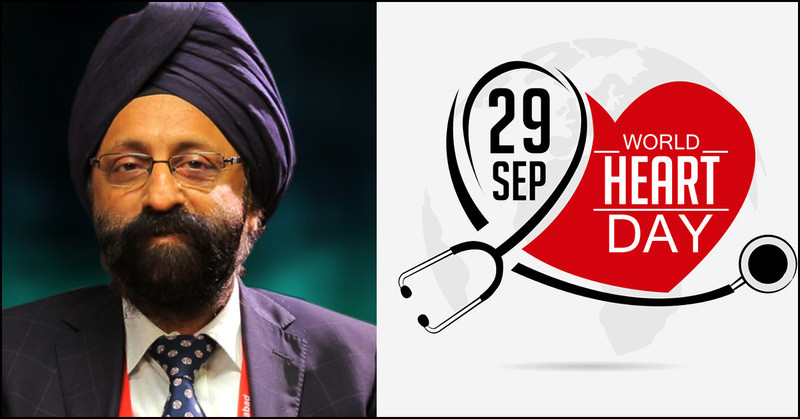Familial hypercholesterolemia is grossly under diagnosed : Dr. JPS Sawhney
M3 India Newsdesk Sep 29, 2017
Heart attacks take the maximum toll of human life all over the world.

Heart disease is reportedly killing approximately 17 million people in the world and a similar scene is seen in our country where, 3 million people die because of CVDs, which includes heart attack and stroke. Indians get a heart attack 8-10 years earlier than other ethnic groups. The most unfortunate fact is that 40 per cent people in our country who develop heart attack are under the age of 55.
Familial hypercholesterolemia (FH): Common cause of pre-mature heart disease of genetic origin
Three most important causes of premature heart attack are tobacco consumption, family history of premature heart disease in parents or siblings (less than 55 years in men & less than 65 years in women) & diabetes. Women get heart disease approximately 10 years later than Men. However, if a woman is diabetic, smoker or has family history of premature heart disease then she can develop heart disease even in pre menopause phase.
The most common cause of pre-mature heart disease of genetic origin is familial hypercholesterolemia (FH).
Prevalence of familial Hypercholesterolemia
The prevalence of this is 1 in 250 to 1 in 500 in the population. Less than one percent of patients are diagnosed with FH in developed nation such as the USA, Canada, Australia and Japan but in Scandinavian countries Netherlands the identification of FH in the society is high upto 40-70%. Approximately, 4-5 million people are suffering from this condition in our country. FH is common, but we have failed to identify it. Heterozygous FH condition is an autosomal dominant condition which penetrates in 50 percent of the family members.
Diagnosis of familial Hypercholesterolemia
Familial hypercholesterolemia is grossly under diagnosed and undertreated particularly among young.
There is no globally accepted single criteria but Dutch Lipid Clinical Network (DLCN) Criteria is suggested by European Society of Cardiology to diagnose FH clinically in the community.
This includes the clinical history, family history, physical examination, LDL-C levels and DNA analysis. Patient with premature (< 55 years in men; < 60 years in women) coronary artery disease is assigned 2 points.
Family History of premature (< 55 years in men; < 60 years in women) CAD or any vascular disease is 1 point.
On physical examination, presence of Tendinous xanthomata scores 6 point and Arcus cornealis prior to age 45 years is given 4 points.
LDL-C levels ≥325 mg/dL, 250 – 329 mg/dL, 190 – 249 mg/dL, 155 – 189 mg/dL are assigned scores of 8,5,3,1 respectively. In genetic testing if there is the presence of Functional mutation in the LDLR, apo B or PCSK9 gene; 8 points are assigned to the total score. Scores assigned in each group are then added with scores from other groups. Final diagnosis is based on scoring of points. If a patient scores more than 8 points, he is diagnosed as a ‘definite’ case of FH whereas if patient scores between 6-8 points his diagnosis is ‘probable’ and any score between 3-5 points is termed as ‘possible’ FH.
In the majority of CAD patients who are already on a statin, a correction factor is suggested to get the pre statin treatment lipid levels to calculate the DLCN points. The correction differs according to the statin prescribed.
| Cholesterol adjustment factors | ||
| AGENT |
TREATMENT (mg/day) |
LDL-C adjustment factor |
| Atorvastatin |
10 20 40 80 |
1.6 1.8 2.0 2.2 |
| Rosuvastatin |
5 10 20 40 |
1.8 1.9 2.1 2.4 |
| Ezetimibe | 10 | 1.2 |
For example: Adjusted cholesterol = actual measurement X cholesterol adjustment factor for medication/dose as given by DLCN
Example: LDL on 20mg of Atorva = 110 Adjusted LDL = 110 x 1.8 (from DLCN) = 198 (3 points)
Disclaimer-The information and views set out in this article are those of the author(s) and do not necessarily reflect the official opinion of M3 India. Neither M3 India nor any person acting on their behalf may be held responsible for the use which may be made of the information contained therein.
-
Exclusive Write-ups & Webinars by KOLs
-
Daily Quiz by specialty
-
Paid Market Research Surveys
-
Case discussions, News & Journals' summaries